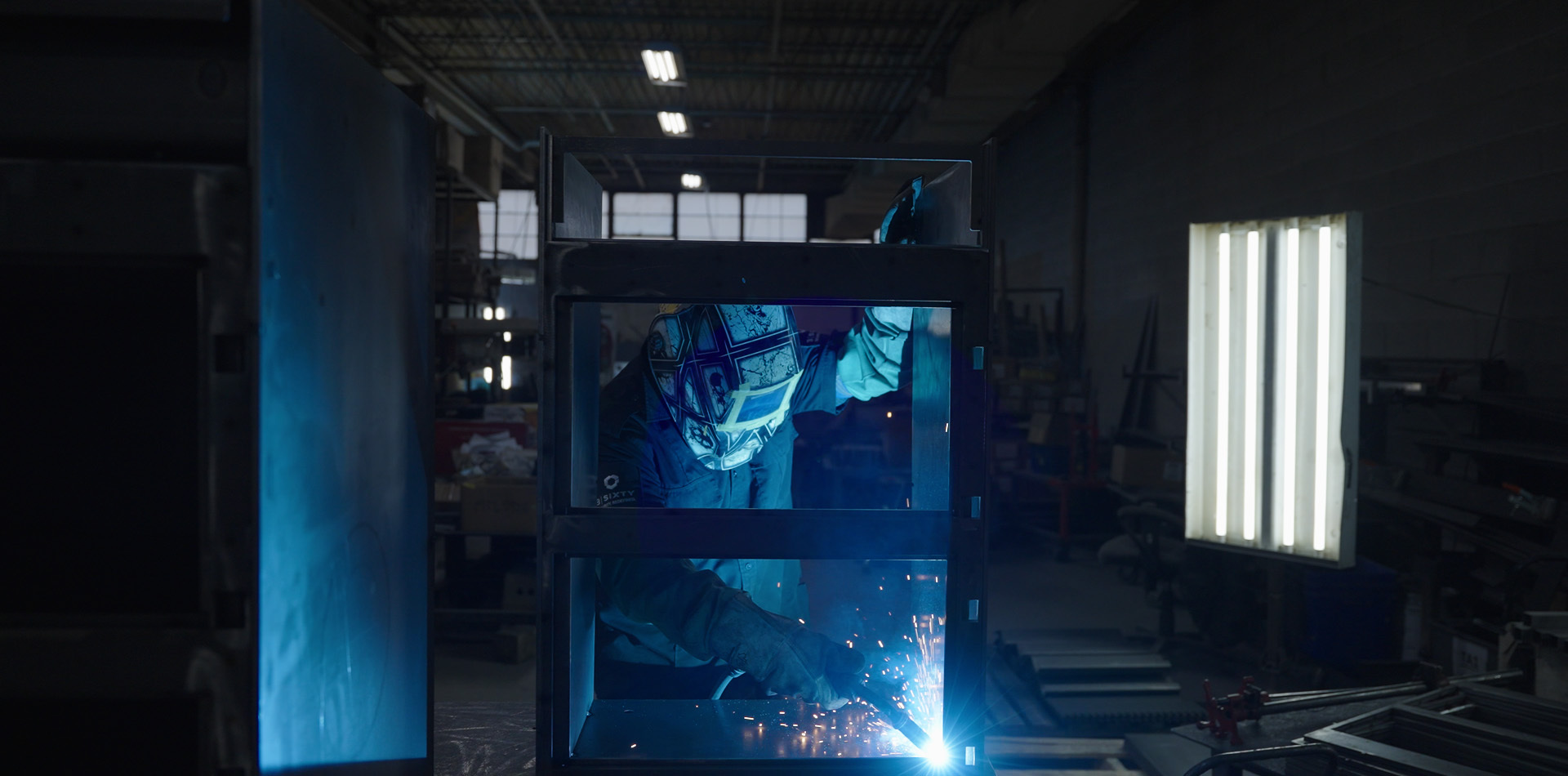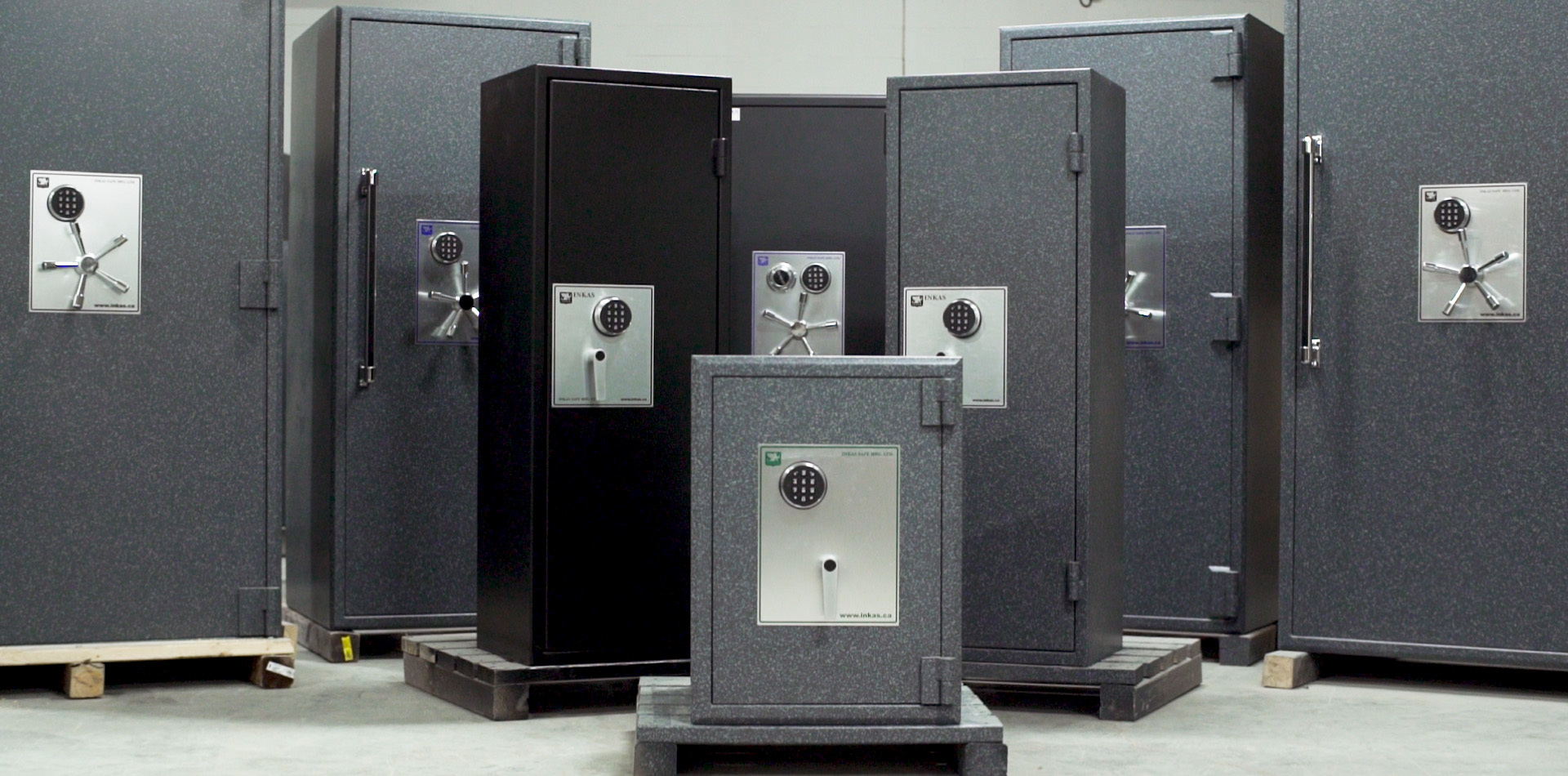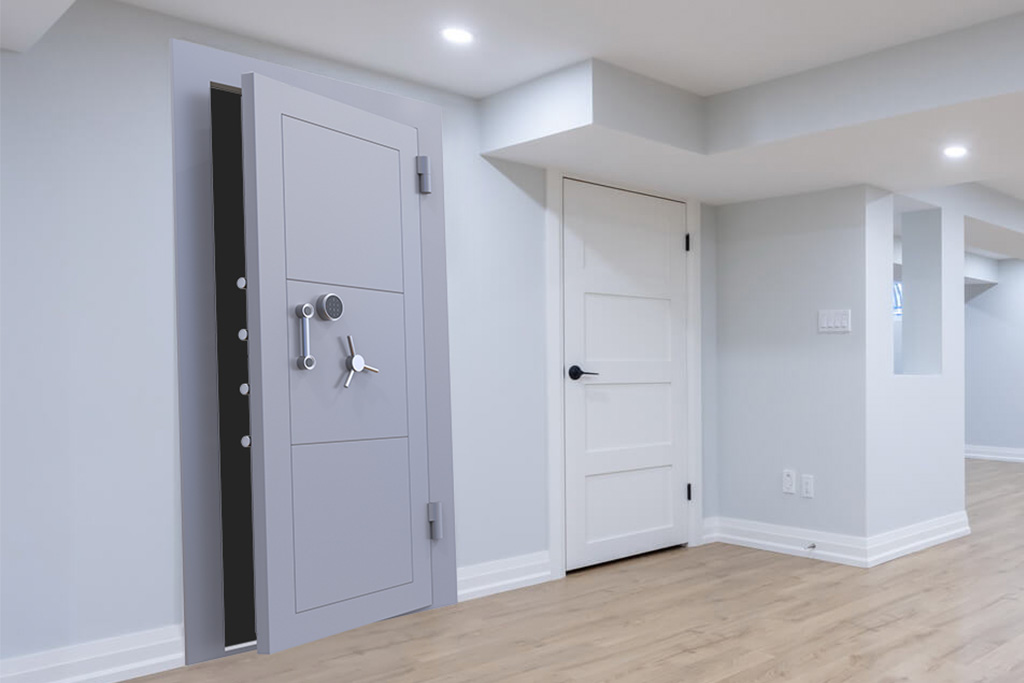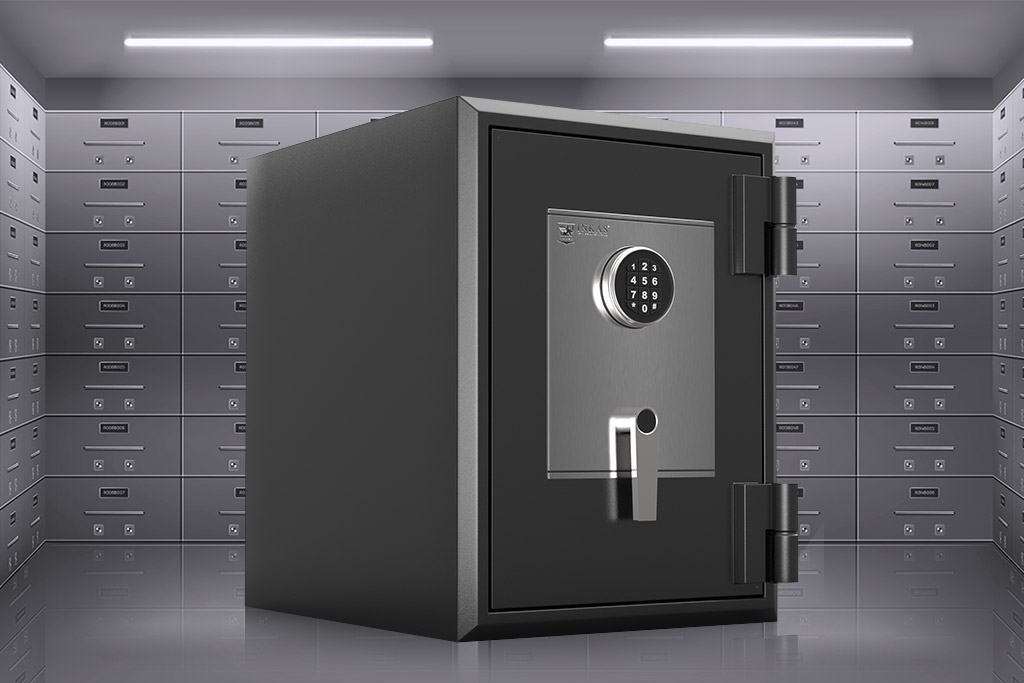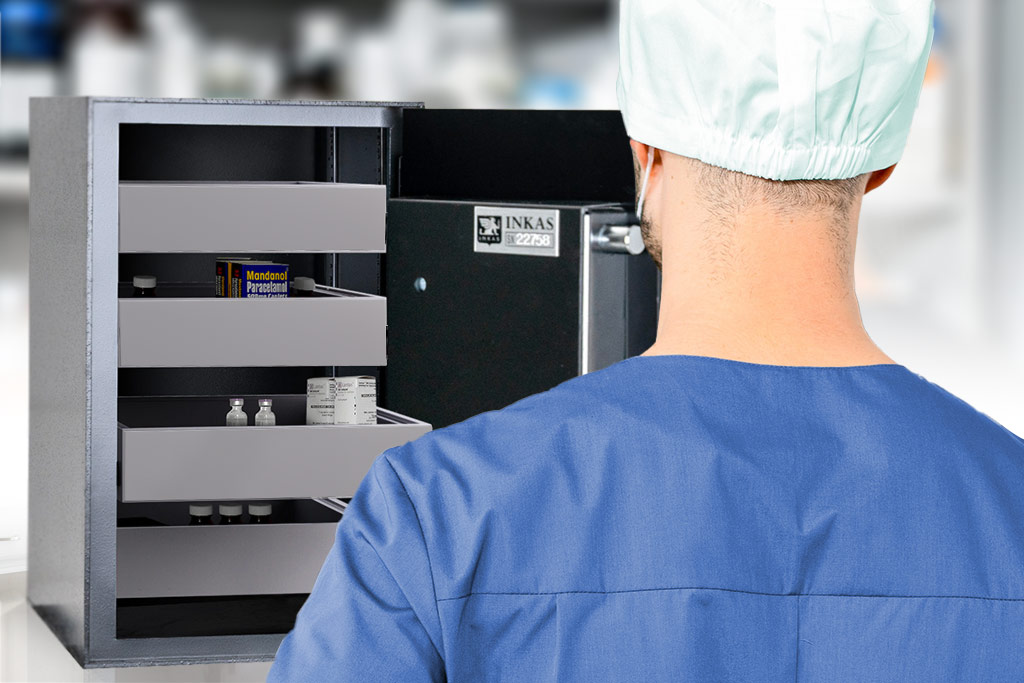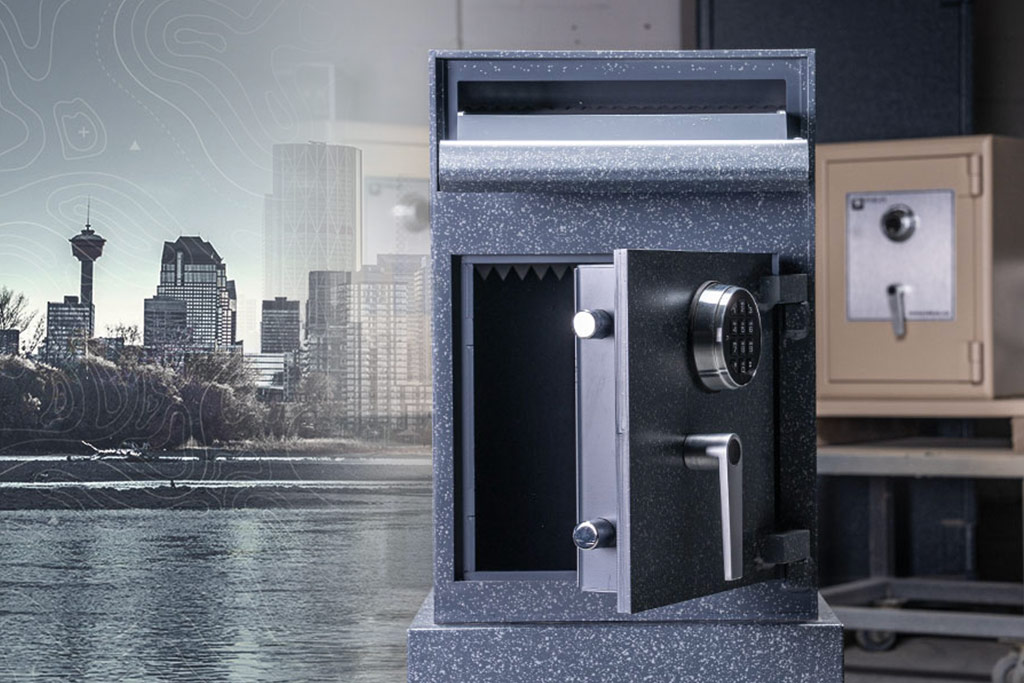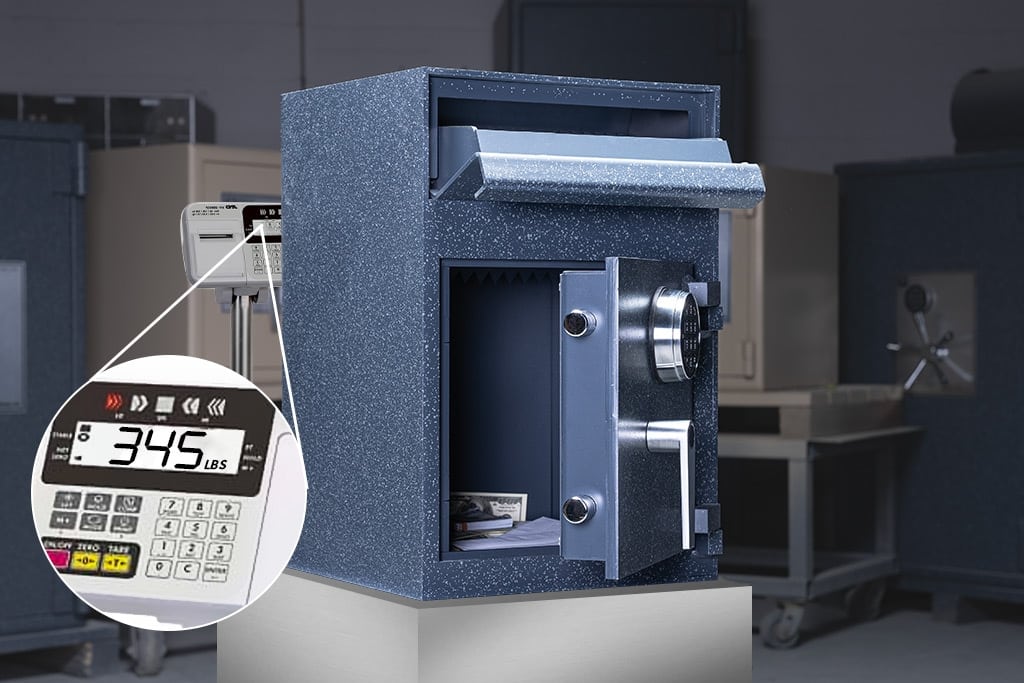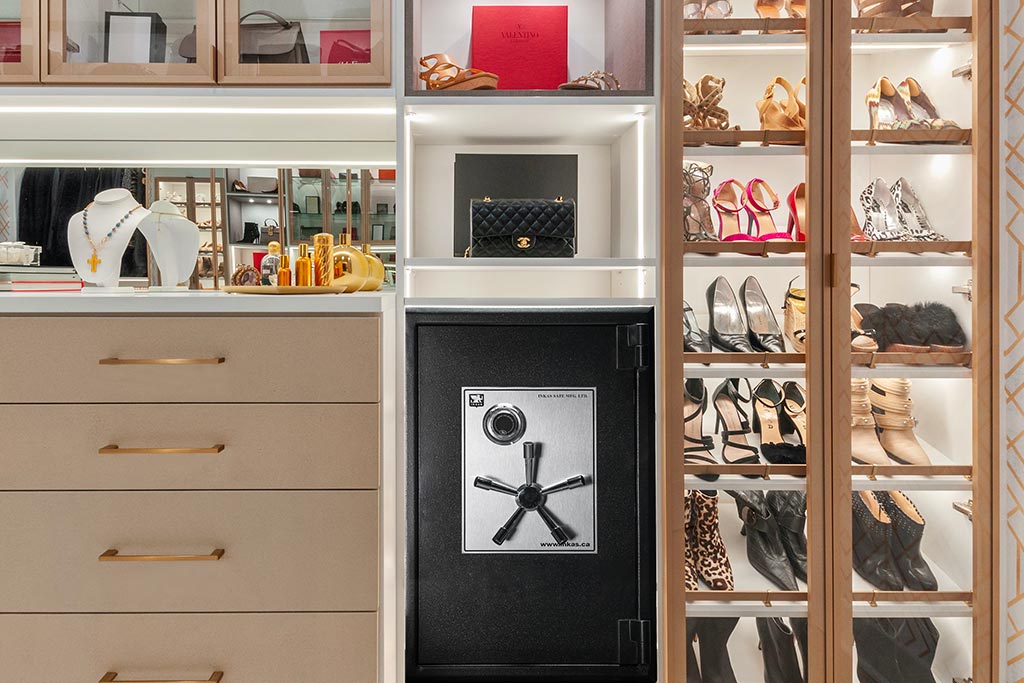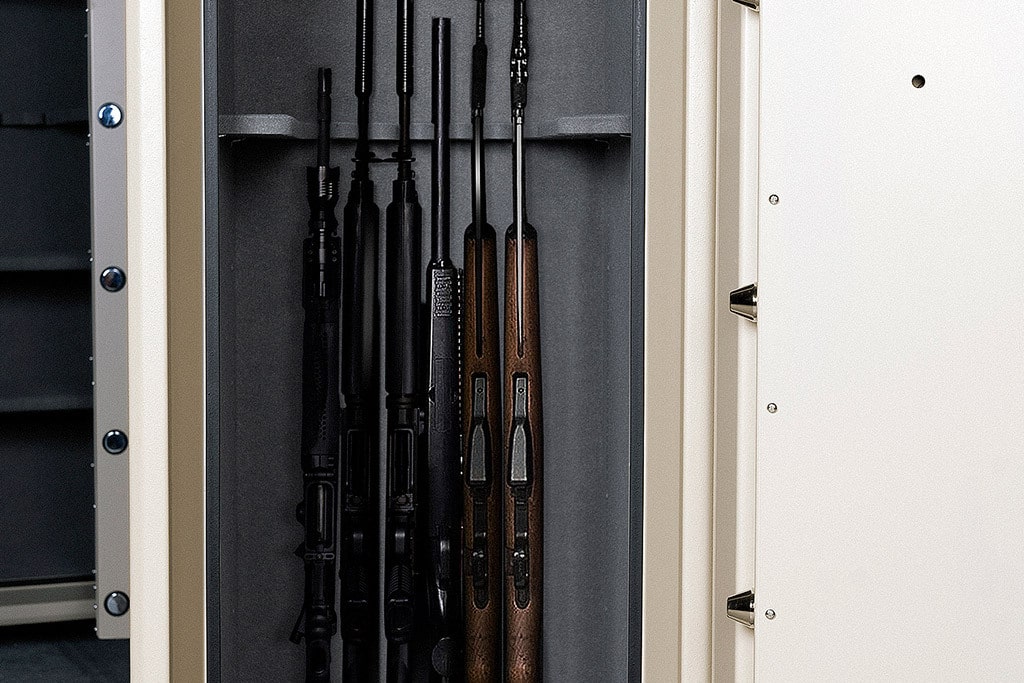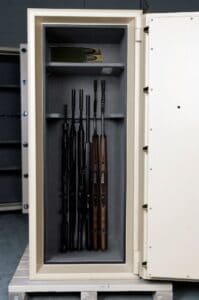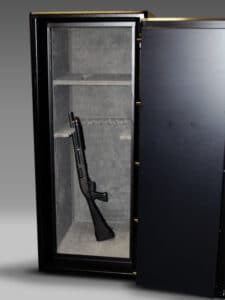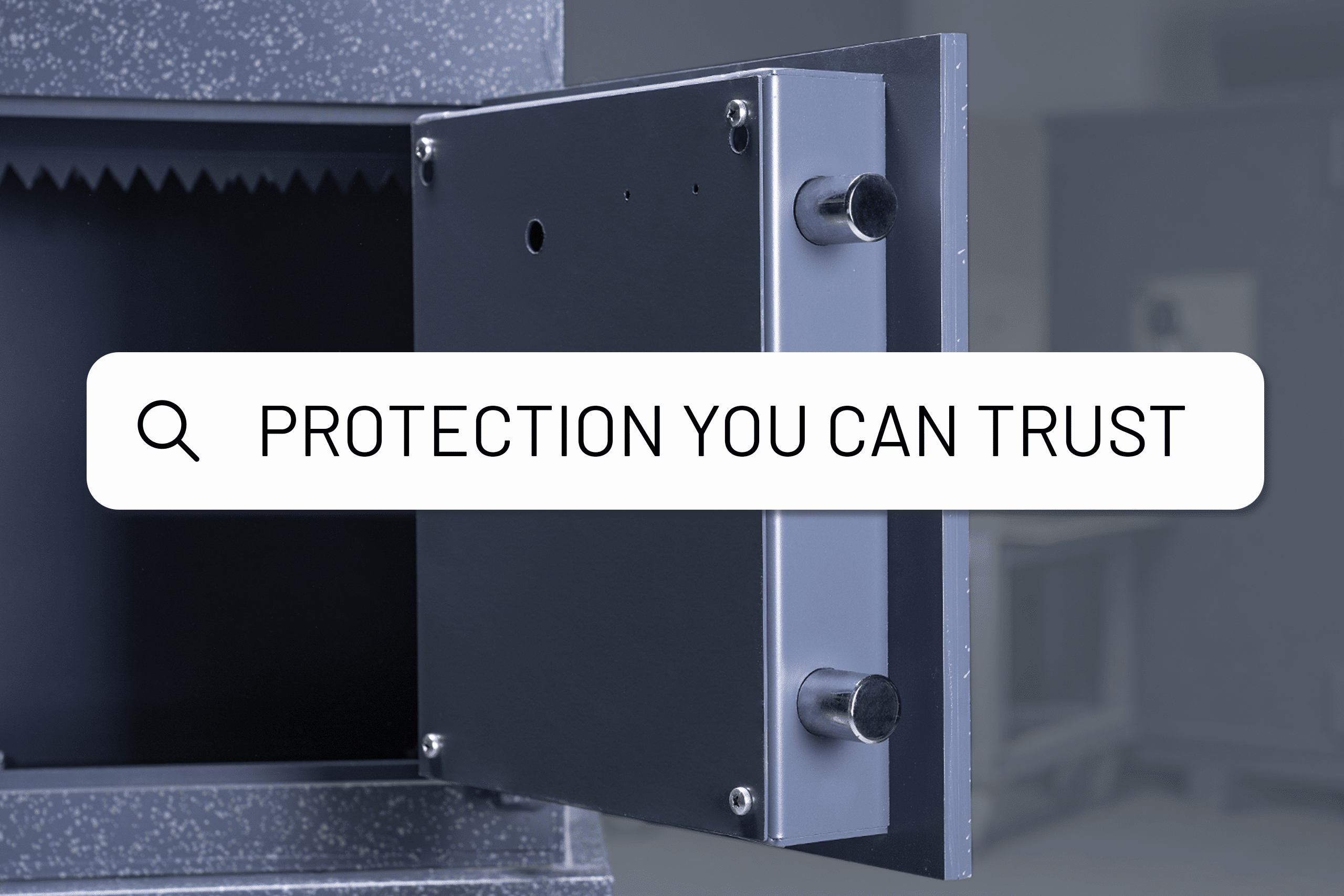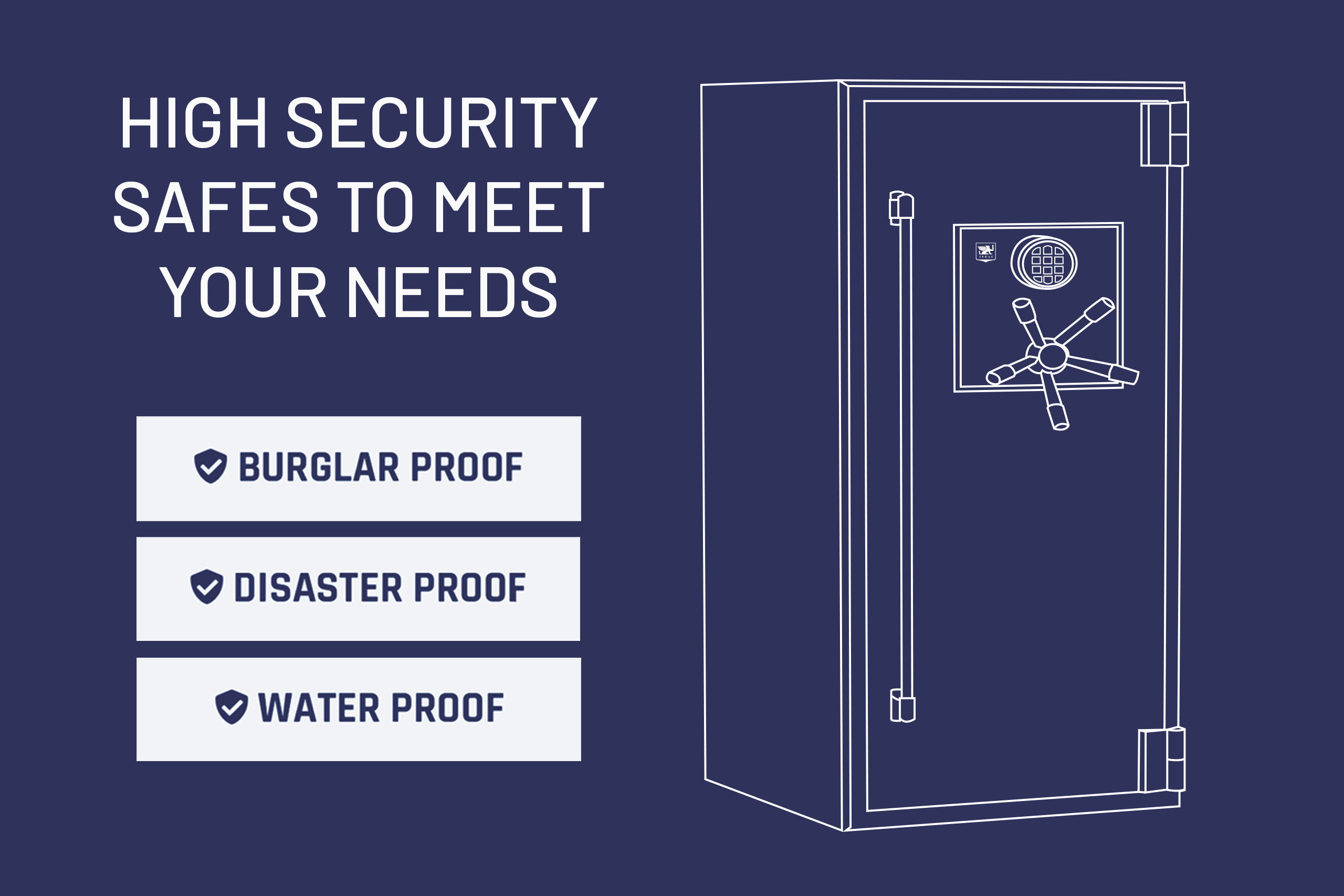A wall safe is a secure storage solution designed to be installed within the walls of a home or office, offering a discreet way to safeguard valuables, documents, and other important items. These safes are typically mounted between wall studs, allowing them to be easily concealed behind paintings, mirrors, or inside closets, thus blending seamlessly with the room's decor while providing protection against theft, and in some cases, fire or water damage.
Wall safes vary in design, featuring different lock types including traditional key locks, combination dials, electronic keypads, and biometric systems that use fingerprints for access. They are constructed from durable materials such as steel, with some models boasting advanced security features like pry-resistant doors, interior LED lighting, and adjustable shelving to organize contents effectively.
Importance of Wall Safes in Security
Wall safes play a vital role in home and office security by offering a secure and accessible place to store valuables and sensitive information away from potential burglars. Their built-in nature makes them less conspicuous than freestanding safes, providing an added layer of security through concealment. Furthermore, the option for advanced locking mechanisms, including biometric access, allows for quick yet secure entry by authorized users.
When selecting a wall safe, it's essential to consider factors such as the safe's locking mechanism, material durability, size, and any special features like fire or water resistance that align with your specific security needs. Installation typically requires mounting the safe between wall studs, and for optimal security, it may be advisable to consult with or hire a professional to ensure it's properly installed.
Wall safes not only deter theft but also contribute to a well-rounded security strategy by protecting valuables from various threats. Whether it's safeguarding jewelry, important documents, or firearms, a well-chosen wall safe can provide peace of mind knowing that your valuables are secure and accessible only to those with authorized access.
Types of Wall Safes
Standard Wall Safes
Standard wall safes are designed for everyday use, providing secure storage for valuables, documents, and small items within a residential or commercial setting. They are typically made of durable steel and can be installed between wall studs. Standard safes often come with a variety of lock types, including key, combination, electronic keypad, or biometric systems. Their design allows them to be easily concealed behind furniture or wall hangings, making them a practical choice for most security needs.
Fireproof Wall Safes
Fireproof wall safes offer enhanced protection against heat and fire, safeguarding contents for a specified period at certain temperatures. These safes are constructed with fire-resistant materials that help to insulate the interior, keeping documents and valuables safe from fire damage. The fire rating of a safe, typically measured in hours, indicates the duration it can withstand high temperatures while maintaining an internal temperature safe for stored items. Fireproof wall safes are ideal for storing important documents, digital media, and other items that could be destroyed by fire.
Waterproof Wall Safes
Waterproof wall safes provide protection against water damage, including floods or spills. These safes are designed with waterproof seals that prevent water from entering the safe, ensuring the safety of its contents during water exposure. Waterproof safes are particularly valuable in areas prone to flooding or for storing items that are sensitive to moisture, such as paper documents, photographs, and certain types of electronic media. It's important to note that while some safes are both fireproof and waterproof, others may offer only one type of protection.
Hidden Wall Safes
Hidden wall safes are designed to offer an additional layer of security through concealment. These safes can be installed in various hidden areas of a home or office, such as behind wall-mounted paintings, mirrors, or inside fake electrical outlets. The primary advantage of hidden wall safes is their ability to remain undetected by burglars, making them less likely to be targeted. Some models are specifically designed for easy concealment, with features such as flush-mounted doors that allow them to blend seamlessly with the surrounding wall surface.
Each type of wall safe serves a specific purpose and offers different levels of protection. When choosing a wall safe, it's essential to consider the primary threats to your valuables (theft, fire, water) and select a model that offers the appropriate level of security. Additionally, considering the installation location and how well the safe can be concealed or integrated into your space will help ensure the best possible protection for your valuables.
Selection Criteria for Wall Safes
Size and Capacity
The size and capacity of a wall safe are crucial factors to consider based on the items you intend to store. Wall safes come in various dimensions to fit between standard wall studs, typically with a depth that corresponds to the wall's thickness. Capacity is measured in cubic feet or inches, and choosing the right size depends on your space availability and storage needs. For minimal storage requirements, a compact safe might suffice, but for larger items or extensive collections, look for a safe that offers more internal space without compromising on security.
Lock Mechanisms
- Key Locks are the simplest form, but they require managing physical keys which can be lost or copied.
- Combination Dials provide a traditional, battery-free option that's reliable over long periods.
- Digital Keypads offer convenience and the ability to easily change codes, but they require batteries to operate.
- Biometric Locks use unique physical characteristics, such as fingerprints, offering quick access and high security. The choice among these options depends on your preference for convenience versus traditional security measures. Consider how often you'll access the safe and who else might need to use it.
Fire and Water Resistance Levels
Fireproof and waterproof ratings are significant if you're storing documents or valuables susceptible to fire or water damage. Fire resistance is measured by the amount of time a safe can withstand extreme temperatures, typically ranging from 30 minutes to over 2 hours. Water resistance varies by design, with some safes offering protection against flood conditions. Review the safe's specifications for UL (Underwriters Laboratories) ratings or other certifications that indicate the level of protection provided.
Construction and Security Features
The construction of a wall safe determines its resistance to physical attacks. Look for safes made with heavy-gauge steel and features like pry-resistant doors, concealed hinges, and reinforcement in key areas. Additional security features might include alarm integration, which alerts you to unauthorized access attempts, or tamper indicators. The quality of construction and added security features directly impact the safe's ability to protect its contents.
Price and Brands
Wall safe prices vary widely based on size, security features, and the brand's reputation. While budget is an important consideration, investing in a higher-priced safe often means benefiting from better construction materials, advanced security features, and more reliable lock mechanisms. Popular and trusted brands in the wall safe market include SentrySafe, Barska, and Viking Security Safe, among others. These brands are known for their quality, reliability, and customer service. When selecting a wall safe, consider it an investment in the protection of your valuables and choose a brand with a solid reputation for quality and security.
Selecting the right wall safe involves balancing your security needs with the features offered by various models and brands. Consideration of the above criteria will help ensure that you choose a safe that provides the protection and accessibility you need for your valuable possessions.
Planning and Preparation for Wall Safe Installation
IMPORTANT! Installing a wall safe involves a comprehensive process that includes understanding wall structures, ensuring the safe is properly anchored, and integrating it with home security systems, thus it is highly recommended that such installations be carried out by professionals to ensure security and functionality.
When considering the installation of a wall safe, careful planning and preparation are essential to ensure the safe is both secure and meets your needs effectively.
Assessing Your Needs
Understanding what you intend to store in your wall safe is the first step. This will help determine the size and type of safe you need. Consider whether you'll be storing documents, jewelry, firearms, or digital media, as this will influence not only the size but also the features you might need, such as fire or water resistance.
Choosing the Right Location
The location of your wall safe is crucial for both security and convenience. It should be easily accessible to you but not obvious to potential intruders. Common locations include behind doors, inside closets, or behind wall hangings and paintings. The goal is to integrate the safe into your home in a way that it remains concealed from a casual observer. Also, ensure the chosen location is free from electrical wiring and plumbing that could complicate the installation.
Tools and Materials Needed for Installation
The basic tools and materials required for installing a wall safe include:
- Tape measure: To ensure accurate measurements between wall studs and for the safe dimensions.
- Hammer and nails or a stud sensor: To locate the studs in the wall where the safe will be mounted.
- Level: To ensure the safe is installed straight and level for proper operation.
- Drywall saw: For cutting out the section of the wall where the safe will be inserted.
- Drill/driver: For securing the safe to the wall studs with screws.
- Shims or strips of plywood (optional): Used to adjust the depth of the wall studs if necessary to ensure a snug fit for the safe.
Proper planning includes checking for any obstructions in the wall where you plan to install the safe, such as electrical wiring or plumbing. The wall's structure should be able to support the weight of the safe and its contents without compromising the integrity of the wall or the safe's security.
By carefully assessing your needs, choosing the right location, and gathering the necessary tools and materials, you can ensure a smooth and secure installation of your wall safe, providing peace of mind and enhanced security for your valuable items.
Installation Guide for Wall Safes
IMPORTANT! Installing a wall safe involves a comprehensive process that includes understanding wall structures, ensuring the safe is properly anchored, and integrating it with home security systems, thus it is highly recommended that such installations be carried out by professionals to ensure security and functionality.
Step-by-Step Installation Process
- Locate the Wall Studs: Use a stud finder or tap the wall lightly with a hammer to find the studs. Wall safes are typically installed between these studs.
- Mark the Safe Outline: Once you've found the studs, hold the safe against the wall and trace its outline. Ensure it's level by using a spirit level.
- Cut the Drywall: Using a drywall saw, carefully cut along the traced outline. Be cautious of any electrical wiring or plumbing behind the drywall.
- Prepare the Space: If the studs do not align perfectly with the safe's mounting holes, you may need to add wooden shims or adjust the opening slightly.
- Insert the Safe: Place the safe into the wall opening. It should fit snugly between the studs.
- Secure the Safe: Use a drill to screw the safe into the studs. Most safes come with mounting hardware and pre-drilled holes for this purpose.
- Test the Lock: Before placing valuables inside, test the locking mechanism to ensure it's working correctly.
For a detailed guide, including how to handle specific safe models, refer to the installation instructions that come with your wall safe or consult online resources like "This Old House" for general guidance.
Professional Installation vs. DIY
- DIY Installation: Ideal for those who are handy and have experience with basic home improvement tools. DIY installation can save money and is feasible for most standard wall safes. However, it requires careful attention to detail to ensure the safe is installed securely and without damage to your home's structure.
- Professional Installation: Recommended if you're not comfortable with the installation process or if the safe requires complex installation (e.g., electrical wiring for digital locks or reinforcement for heavier safes). Professionals can ensure the safe is installed correctly and securely, potentially saving you from costly mistakes. Professional installation might also be necessary to maintain the warranty on some high-end safes.
Common Installation Challenges and Solutions
- Finding Studs in Plaster Walls: Older homes with plaster walls might make it difficult to locate studs. Use an electronic stud finder that's calibrated for deeper scans or consult a professional to avoid damaging the walls.
- Dealing with Electrical Wiring or Plumbing: If you encounter wiring or plumbing during installation, it's safest to choose a new location for the safe. Rerouting electrical or plumbing should be done by a professional to avoid potential hazards.
- Securing Heavy Safes: For heavier safes, it's crucial to ensure the wall structure can support the weight. Reinforcing the wall or choosing a floor safe might be a better option for extremely heavy models.
- Adjusting for a Tight Fit: If the safe doesn't fit snugly between the studs, use wooden shims to fill any gaps and ensure the safe is secure. Ensure the safe is level before finalizing the installation.
By understanding the steps involved, the potential need for professional help, and how to address common challenges, you can ensure a smooth installation process for your wall safe. Always refer to the manufacturer's instructions and consider consulting with a professional if you encounter any issues beyond your expertise.
Using Your Wall Safe
Operating Lock Mechanisms
Operating the lock mechanism of your wall safe efficiently is crucial for maintaining the security of your valuables. The type of lock your wall safe features—be it key, combination, digital keypad, or biometric—dictates how you interact with it:
- Key Locks: Keep the key in a secure location separate from the safe. Avoid obvious hiding places.
- Combination Locks: Memorize the combination and do not write it down or share it with others unnecessarily. If you must write it down, store it in a separate, secure location.
- Digital Keypads: Change the digital code periodically for added security. Ensure the keypad is free from fingerprints that could give away your code. In case of battery failure, know how to access the backup key.
- Biometric Systems: Regularly update the registered fingerprints, especially if the safe is used by multiple people. Ensure the scanner is clean for accurate reading.
Regular testing and maintenance of the lock mechanism are important to ensure it operates smoothly and securely.
Organizing Your Valerables
Efficient organization within your wall safe maximizes space and ensures quick access to items when needed:
- Use the safe's shelves, if available, to segregate items by type or value.
- Consider using small, labeled boxes or pouches to organize jewelry, documents, and other small items. This prevents scratching and makes it easier to find what you need without rummaging.
- Place items used less frequently at the back or bottom of the safe and those accessed more often at the front or top for convenience.
Maintenance and Care
Regular maintenance ensures the longevity and reliability of your wall safe:
- Dust and Clean: Periodically dust the exterior and interior of the safe. Use a soft, dry cloth to clean the keypad or fingerprint scanner to keep the sensors clear.
- Check the Batteries: For electronic locks, regularly check and replace the batteries to avoid being locked out due to power failure.
- Inspect the Lock and Bolts: Ensure the locking mechanism and bolts operate smoothly. Apply lubricant if the manufacturer recommends it.
- Secure the Installation: Periodically check that the safe remains securely fastened within the wall, with no signs of tampering or loosening.
- Professional Inspection: Consider having the safe inspected by a professional every few years, especially if it has complex locking mechanisms or electronic components.
Proper use, organization, and maintenance of your wall safe not only extend its lifespan but also ensure it provides reliable security for your valuables. Always refer to the manufacturer's instructions for specific care and maintenance guidelines tailored to your safe's model and type.
Advanced Features and Technologies in Wall Safes
Modern wall safes incorporate several advanced features and technologies designed to enhance security and provide more convenience to users. These features include biometric access, alarm integration, and smart safe technologies, among others.
Biometric Access
Biometric access is one of the most secure and user-friendly methods of securing a wall safe. It utilizes unique biological data, such as fingerprints, to allow access. This technology offers quick accessibility and eliminates the need for remembering combinations or keys. For example, the Viking Security Safe VS-52BLX utilizes a biometric locking system with a high-resolution optical sensor capable of storing multiple fingerprints, ensuring that only authorized users can access the safe's contents.
Alarm Integration
Alarm integration in wall safes adds an extra layer of security by connecting the safe to a home or business alarm system. This feature triggers an alarm when unauthorized access attempts are detected, alerting the property owner and potentially scaring off intruders. While specific details on alarm integration were not directly found in the sources, it's a commonly mentioned feature in modern security systems and smart safes available in the market.
Smart Safe Technologies
Smart safes incorporate digital interfaces and connectivity features, allowing users to manage and monitor their safes through mobile apps or home automation systems. These safes can include features like remote locking and unlocking, access logs, and notifications for access attempts or other security events. The integration of smart technologies into wall safes enhances convenience and control for the user, providing peace of mind through real-time monitoring and management capabilities.
The advancement in safe technology, particularly in wall safes, has significantly improved the security and functionality of these devices. Whether through biometric access that offers a personalized security experience, alarm integration that enhances protection, or smart technologies that bring safes into the connected home ecosystem, users have more options than ever to ensure their valuables are securely stored yet easily accessible when needed.
Safety and Legal Considerations
When considering the safety and legal considerations for wall safes, there are several important factors to keep in mind, including legal compliance with specific regulations, safety measures, and precautions to ensure the well-being of individuals and property.
Legal Compliance and Restrictions
Legal compliance varies significantly by location, with specific standards and certifications required for certain types of safes, especially those intended for storing firearms. For example, in California, safes intended for storing firearms must meet specific Department of Justice (DOJ) regulatory standards. These standards are not related to burglary or fire ratings but are instead focused on construction standards. Safes must either have a CDOJ certification, a label on the container indicating compliance, or a UL Residential Security Container (RSC) Listing. These regulations ensure that the safe can securely store firearms, has a robust locking system, and is constructed from durable materials.
Safety Measures and Precautions
When installing and using wall safes, it's critical to follow safety measures and precautions to prevent injuries and ensure the safe storage of valuables. This includes proper installation to prevent the safe from becoming a hazard itself. Retailers and manufacturers often provide guidelines and features designed to enhance safety, including fireproof and impact-resistant models, electronic and biometric lock types, and models that come with backup keys and bolting hardware for secure installation.
Moreover, when dealing with older buildings, particularly those constructed before 1978, it's essential to consider the risks associated with lead-based paint. The Environmental Protection Agency (EPA) mandates that contractors who renovate or partially demolish such buildings must be lead-safe certified and follow lead-safe practices. These practices are designed to minimize exposure to lead dust, which can be harmful if inhaled or ingested, emphasizing the importance of containing dust, using dust-minimizing methods, and conducting careful cleanups.
Troubleshooting and Maintenance of Wall Safes
Maintaining a wall safe is crucial for ensuring its longevity and reliability. Regular maintenance can prevent many common issues, but sometimes problems may still arise. Here's a guide on troubleshooting, when to seek professional help, and routine maintenance tips for wall safes.
Common Problems and Solutions
- Lock Mechanism Failure: If the electronic lock on your safe isn't working, it could be due to dead batteries, which are easily replaceable. For mechanical locks, ensure they aren't jammed by dust or debris.
- Difficulty in Opening: If you're having trouble opening the safe, check for alignment issues or obstructions. Sometimes, the door might become misaligned due to improper installation or wear and tear.
- Humidity Inside the Safe: Use silica gel packs or a dehumidifier to absorb excess moisture. This is especially important for safes that are not waterproof and can help protect valuables from moisture damage.
- Electronic Keypad Issues: Keypad malfunctions often result from battery problems. Replacing the batteries may resolve the issue. If the keypad remains unresponsive, check the manufacturer's manual for a reset procedure.
When to Seek Professional Help
- Lockout Situations: If you're locked out of your safe due to a malfunctioning lock or forgotten combination, it's best to call a professional. Attempting to force the safe open can cause damage.
- Mechanical Failures: For issues with the locking mechanism that cannot be resolved through simple troubleshooting, professional service is recommended to avoid compromising the safe's security.
- Installation Problems: If the safe is not securely mounted or you're unsure about the installation process, hiring a professional can ensure it's correctly and safely installed.
Routine Maintenance Tips
- Regular Inspections: Check your safe periodically for signs of wear and tear, especially the lock mechanism and door hinges. Look out for rust or corrosion and address any issues promptly.
- Clean Regularly: Use a soft cloth to dust the exterior and interior of the safe. Avoid harsh chemicals that could damage the safe's surface or interior lining.
- Lubricate Mechanical Parts: Apply a silicon-based lubricant to the lock mechanism and hinges annually to ensure smooth operation. Avoid using oil-based products as they can attract dust.
- Check the Batteries: For electronic safes, change the batteries at least once a year to prevent lockouts due to power loss.
- Moisture Control: Use moisture absorbers to keep the interior dry, especially in humid climates. Regularly check and replace these absorbers to prevent moisture buildup.
Maintaining your wall safe through regular inspections and addressing issues promptly can help avoid the need for extensive repairs. When in doubt, consulting with a professional can ensure your safe continues to function properly and securely.
Insurance and Wall Safes
When considering the relationship between wall safes and insurance, it's essential to understand insurance requirements, how to document contents for insurance purposes, and the impact of wall safes on insurance rates.
Understanding Insurance Requirements
Insurance companies often consider the presence of a safe when determining home insurance premiums. The type of safe, its security features, and installation quality can all influence insurance coverage and rates. Safes with higher security ratings, like those approved by Underwriters Laboratories (UL) or those with specific cash and valuables ratings, might qualify for better insurance terms. Insurance ratings for safes indicate the level of security they provide and are determined by factors such as resistance to being moved, thickness and strength of the walls and door, the security and complexity of the lock, and overall build quality.
Documenting Contents for Insurance Purposes
For insurance purposes, it's crucial to document the contents of your wall safe. This documentation should include photographs, descriptions, and, if possible, receipts or appraisals of valuable items. Such records can be vital in the event of a claim, providing clear evidence of the items' existence and condition prior to any loss or damage. Items commonly stored in safes, including jewelry, watches, family heirlooms, and important documents like birth certificates, wills, and insurance policies, should all be documented.
How Wall Safes Affect Insurance Rates
The presence of a wall safe can impact home insurance premiums positively, as it demonstrates a commitment to securing valuable items and documents against theft and damage. High-quality safes that provide fire, theft, and possibly water protection might lead to reduced insurance premiums. However, the extent of the impact can vary based on the insurance company's policies and the safe's specific features and ratings. It's always advisable to consult with your insurance provider to understand how a wall safe might affect your rates and to ensure that your safe's specifications align with their requirements for any potential discounts or improved terms.
Future Trends in Wall Safes
Innovations on the Horizon
The future of wall safes is closely tied to advancements in technology and evolving consumer needs for security and convenience. Innovations on the horizon include:
- Enhanced Biometric Security: The use of biometric data for unlocking safes, such as fingerprints, facial recognition, and even retinal scans, is expected to become more common. These methods offer a higher level of security, as biometric data is difficult to replicate or steal compared to traditional keys or combinations.
- Smart Connectivity: Integration with home automation systems is a growing trend. Future wall safes will likely feature connectivity options that allow them to be controlled and monitored via smartphones, tablets, or computers. This could include remote locking/unlocking, status alerts, and access logs.
- Improved Environmental Protection: Advances in materials and construction methods will enhance the fireproof and waterproof capabilities of wall safes, offering better protection for valuables against environmental threats.
- Customization and Modularity: As homes and needs change, the demand for customizable and modular safe designs will increase. Consumers will look for safes that can be easily modified in terms of size, interior layout, and security features to accommodate different items or fit into various spaces within a home.
The Impact of Smart Home Technology
Smart home technology is set to revolutionize the way wall safes are integrated into our daily lives. The impact includes:
- Seamless Integration: Wall safes will become part of the broader smart home ecosystem, working in tandem with other devices for enhanced security. For example, a smart safe could automatically lock when the home's security system is armed or send alerts to homeowners if tampering is detected.
- User-Friendly Access Control: Smart home technology will make it easier to manage who has access to a safe and when. Temporary access can be granted remotely, and usage can be tracked, adding a layer of convenience and security.
- Predictive Maintenance: With smart connectivity, wall safes can monitor their health and status, predicting maintenance needs before a critical failure occurs. This could include battery level monitoring for electronic locks or humidity levels inside the safe, ensuring valuables are stored under optimal conditions.
- Enhanced Security Features: Integration with smart home security systems could allow for real-time alerts and actions in response to security breaches. For example, if an attempt to open the safe is detected, the home's security system could automatically alert authorities or initiate lockdown procedures.
As technology continues to evolve, the future of wall safes looks promising, with innovations aimed at enhancing security, convenience, and integration with smart home systems. These advancements will offer users more sophisticated ways to protect their valuables while seamlessly blending into the digital fabric of their homes.


